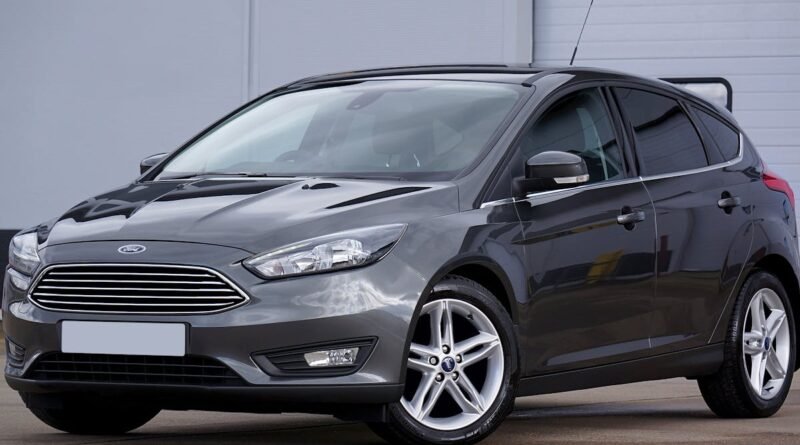Alignment and balancing: everything about the topic and the differences
When purchasing a car, something we should know is that the entire maintenance cost is included in our daily expenses, as we never know when something might happen. And among the needs, alignment and balancing are included! Check out this text to find out everything about each of them.
When purchasing a car , we need to fulfill a series of obligations and take different care of it on a daily basis, such as carrying out maintenance — preventive or corrective. This becomes even more necessary if you have a used or pre-owned car, especially if the previous owner did not take very good care of the vehicle.
But among the points that you need to keep an eye on, which are enough to avoid a series of accidents, we have balancing and alignment , which are two points that many people believe to be the same.
However, we must point out right away that no, they are not the same! And to clarify what alignment and balancing are and answer all your questions about this topic, we developed this content.
So if you want to know everything about the subject, even to avoid headaches having to rush to the workshop at the last minute, continue reading and increase your protection!
Are alignment and balancing the same thing?
If alignment and balancing are not the same thing, what is each one then?
For starters, they both involve tires, but each has a different function. The alignment is done to adjust the angle of each of the wheels, making them parallel to each other and straight to the ground.
Balancing , on the other hand, is the name of the procedure that balances the tire + wheel assembly with the entire vehicle, that is, a well-balanced car is one in which the wheels rotate without vibrating, generating more comfort for the driver and all passengers.
One point they have in common, and which we will see further explained later, is that they both improve tire performance and prevent accelerated wear of the compound and fuel as well.
When should I do each of them?
Once you understand the difference between alignment and balancing , it is important to know when to do each of them.
- Is the car pulling to one side?
- Is the tire wearing faster than it should, or unevenly?
These are the main factors you should analyze to know if it’s time for an alignment — occurring more in used and used cars — but it can also be done when it’s time to change your vehicle’s tire for a new set.
To know when to carry out the second process, you must see if the steering wheel, seat, floor, panel or accessories are vibrating when the car reaches a certain speed. And just like the previous one, it is possible (and recommended) to do this process when changing to new tires. If you wish, they can be done all at once, or whenever it is really necessary.
Oh, and if the car feels different in any way regarding the steering and tires, even after carrying out both types of maintenance, don’t forget to visit a specialized mechanic as soon as possible so that he can investigate the problem and get it fixed. solve it, ok?
And how much does each one cost?
The price for alignment and balancing is not very high, averaging R$100 to R$250 between the main capitals, making it one of the cheapest maintenance tasks. However, this value may vary depending on where you live and the workshop you choose to take your vehicle to, but you shouldn’t go too far away from this price.
Should the two be done together?
Although many people say yes and recommend that the two always be done together, it is not mandatory, ok? So when doing the alignment and balancing , you can decide whether to do both processes at once or not.
But what we recommend is that, as soon as you see that it is necessary to carry out one of them, ask the mechanic for a review so that he can check whether it is also necessary to carry out the other procedure or not. If you need it, don’t waste time; But if you don’t need it, you can get back on the road without any problems, checking the points we mentioned and taking it to the mechanic when you need it.
How important are these procedures?
Before we look at the need, we need to understand what alignment and balancing are for . In addition to preventing irregular tire wear, alignment also helps to increase the useful life of these very important items, contributing to fuel economy and maintaining firm and stable drivability. Balancing serves to generate an improvement in driving comfort, as well as good tire performance.
Simply put: what is alignment and balancing for ? To keep your tire in good condition and keep your safety up to date, avoiding accidents.
Is there any relationship between fuel consumption and these adjustments?
Unfortunately the answer is yes. Whether in a new , pre-owned or used car, your vehicle will use fuel less efficiently if it is due for alignment or balancing. And the reason is quite simple: as both directly influence the set of tires, it is possible that one or more of them may be incorrectly inflated, which can increase your vehicle’s consumption by up to 10%.
So to avoid running out of fuel while traveling somewhere, be sure to keep an eye on the need to do both and keep them in order, okay?
How to take care of your car to postpone maintenance
One of the main tips, which is kind of obvious and something that everyone tries not to do, is to avoid going through holes. In itself, this is a good way to avoid having to stop at the workshop to carry out one of the two processes. But also avoid:
- Strong climbs and hits;
- Going over speed bumps very quickly;
- Drive tires into ditches;
- Walking on or touching the curb while driving.
All of them — each in their own way — can cause your tire to become deformed. Consequently, this will generate more wear on the tray and steering bushings as well, making it necessary to see a mechanic for alignment and/or balancing.
Conclusion,
Alignment and balancing are critical maintenance procedures for all vehicles, assuring safety and peak performance. Alignment corrects wheel angles to maintain them parallel and straight, whilst balancing guarantees that the tire and wheel assembly revolve without generating vibrations. Both techniques reduce erratic tire wear, improve fuel efficiency, and increase driving comfort.

